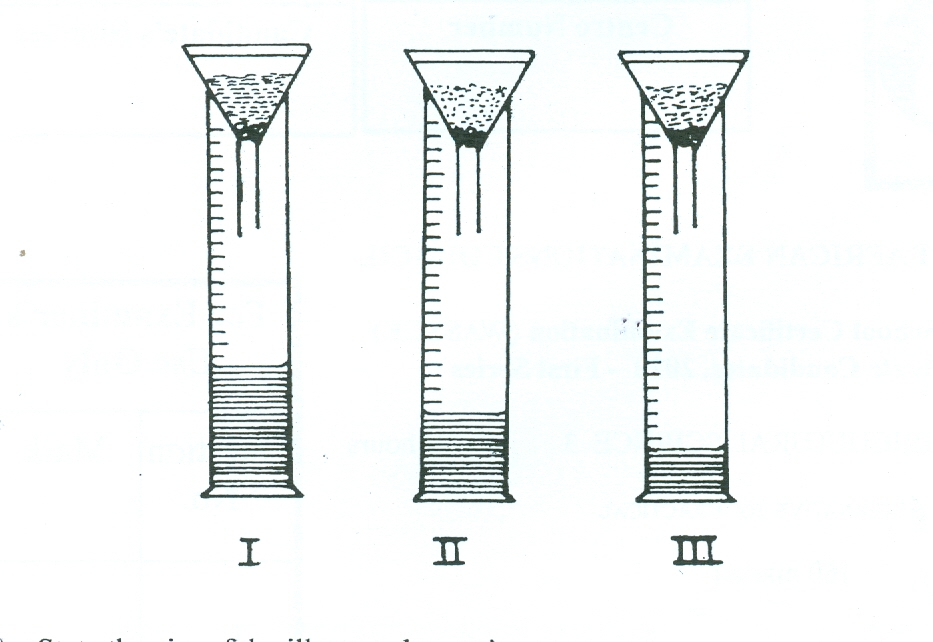Question 1
-
The diagrams below illustrate an experimental set-up in soil analysis. Study them carefully and
answer the questions that follow.

(a) State the aim of the experiment. (1 mark)
(b) List three effects of the results obtained on farming in diagrams I, II and III. (9 marks)
(c) State two methods of improving the soil in the diagram labelled I for crop growth. (2 marks)
(d) Mention three physical properties of silts. (3 marks)
Observation
-
This question was poorly attempted by many candidates. Many candidates were unable to relate the effects of porosity of sandy, clay and loamy soils on farming. Furthermore, candidates could not mention the physical properties of silts.
The expected answers include:
1. (a) Aim of the experiment
- Determination of water holding / retaining capacity of soil
- Determination of porosity of soil
(b) Effects of results obtained on farmingDiagram I
- The soil will drain fast and not retain enough water for plant use
- Nutrients are easily leached
- Acidity is likely to result
- Poor yields are to be expected
- The soil is easy to cultivate
- Not suitable for growth of soil organisms
Diagram II
- Moderate/appropriate water retention
- Soil is easy to work/cultivate
- Good for crop growth
- Maximum yield expected
- Rich medium for growth of soil organisms
Diagram III
- Water logging will result
- Poor aeration and percolation
- Prevent easy root growth
- The soil will be difficult to work
- Poor yields are expected
- Nutrients are not available for plant use
- Soil organisms will not thrive(c) Methods of improving the soil in diagram I for crop growth
- Incorporation of organic manure / inorganic fertilizer
- Mulching
- Cover cropping
- Liming
- Regular irrigation
(d) Physical properties of silts
- Particle size range between 0.02 – 0.002mm in diameter
- Has a high water holding capacity
- Has an unstable structure
- Poorly aerated
- It is not easily warmed up / heated
- It is slightly sticky when wet
- Has low plasticity
